Navy Builds Around Intelligence, Information Consolidation
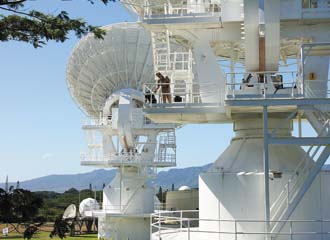 |
The Naval Computer and Telecommunications Area Master Station, Pacific, in Hawaii, provides telecommunications support to naval, joint and coalition forces throughout the Pacific theater and the Indian Ocean. The U.S. Navy has combined its networking and intelligence functions as part of its thrust toward building an information-centric Navy. |
The U.S. Navy already is encountering unexpected changes following the consolidation of its N-2 and N-6 organizations. The effects of the merger already are leaving their mark on the organization itself along with the rest of the service. Budgetary planners effectively are defining the new organization’s campaign plan for the next few years. And, new technologies have leaped to the top of the Navy’s priority list.
This consolidation goes beyond merely merging two organizations—as if that were not difficult enough. A number of diverse activities have been added to the menu of the new N-2/N-6 organization. So the two original groups must incorporate wholly new functions as they merge their own resources and processes in wartime.
Yet even this broad consolidation may not go far enough. Cyber operations have increased in importance to a degree not envisioned even a decade ago, when network centricity already dominated Navy planning. The importance of cyber already is influencing the direction of the new N-2/N-6, and that influence is likely to grow.
Vice Adm. Jack Dorsett, USN, deputy chief of naval operations for information dominance (N-2/N-6), says that the future Navy will be more netted and less focused on delivering capabilities to individual units. It will focus more on the battle management of a group of ships or an entire battle force. The Navy will transition beyond single-unit missile defense or electronic warfare to a broader collective capability, which will provide significant improvements in overall capability. Achieving this will place great demands on networking, information flow protocols and types of bandwidth, he adds.
Some areas of the Navy already are seeing improvements because of the consolidation. Greater efficiencies are emerging as intelligence and information system planning are coordinated. This has helped break down barriers and avoid establishing new ones.
“If you separate the elements of information—communications, command and control, networks, ISR [intelligence, surveillance and reconnaissance] and cyber—you create the potential for stovepipes,” Adm. Dorsett points out. “That’s where the Navy was previously. Now, with all of those resources and requirements combined underneath an N-2/N-6, our ability to operate across the information domain—and to resource our cyber requirements—is streamlined.”
After only a few months of existence, the N-2/N-6 already is adjusting to change. The admiral notes that the chief of naval operations’ (CNO’s) expectations for the organization at its founding are insufficient compared to his expectations today. The N-2/N-6’s original organization was inadequate for meeting the CNO’s current set of requirements.
Adm. Dorsett describes “the mismatch between expectations and resources” as the greatest challenge facing the N-2/N-6. That issue may not be resolved fully until the new organization puts together its next budget request.
The N-2/N-6 has completed its basic standup and establishment of its capabilities. Now it is progressing through the construction of its information dominance corps, and the work force has been established in several of its areas.
The next priority is to develop a budget as part of Program Objective Memorandum (POM)-12. This tasking aims to resolve the conflict between expectations and resources. Individual system priorities have not been determined yet, but several areas stand out as priorities for the N-2/N-6.
ISR is high on the list. Adm. Dorsett states that the Navy clearly wants to improve ISR for surface, submarine and airborne operations. The service is examining trade-offs and new capabilities in that arena, he adds.
Unmanned capabilities also are high on the Navy’s wish list. Adm. Dorsett states that the Navy’s initial steps have worked well, but now the service’s unmanned aviation programs are in the second order of development. The Navy is examining capabilities for all types of unmanned vehicles—surface and underwater as well as air vehicles. One goal is to achieve an unmanned underwater vehicle capability by the end of this decade, so the Navy has partnered with academia and industry to pursue some options. This effort has moved from research and development into a capability-oriented approach, he relates.
Advances in electronic warfare are a priority of CNO Adm. Gary Roughead, USN (SIGNAL Magazine, December 2009). Adm. Roughead also has issued directions for improvements in undersea surveillance and antisubmarine warfare.
Atop the N-2/N-6 communications and networks concerns is the transition from the Navy/Marine Corps Intranet (NMCI) to the Next Generation Enterprise Network, or NGEN. The N-2/N-6 also is striving to accelerate the Consolidated Afloat Network and Enterprise Services (CANES) program effort. And, the N-2/N-6 is keeping a close eye on the satellite-based Mobile User Objective System. Adm. Dorsett allows that the Navy has identified mitigations in the concept, and it is working to ensure that these mitigations are emplaced to prevent a UHF satellite service gap.
And, cyber is the focus of many efforts to improve Navy capabilities, beginning with the work force. Another 900 people will be added to the Navy’s cyber professional work force in the coming fiscal year, Adm. Dorsett states.
The N-2/N-6 construct provides a single individual responsible for resourcing cyber and for cyber policy on the staff of the Office of the Chief of Naval Operations, whereas before, multiple people were responsible for resource sponsorship. The establishment of Fleet Cyber Command—the 10th Fleet—is the most significant development for Navy cyber operations, the admiral says. It provides the Navy with an organization aligned directly with the National Security Agency and, if established, the
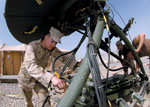 |
A Navy information systems technician sets up a rugged deployable satellite antenna in Kandahar, Afghanistan. Joint or coalition information sharing, whether for maritime domain awareness or for theater operations, is a top priority for the Navy’s N-2/N-6. |
Adm. Dorsett states that many areas of the Navy will see improvements emerging from the consolidation, particularly when the POM-12 submission is completed. He describes ballistic missile defense, ISR and electronic warfare as the areas that will see the greatest improvement over the next couple of years.
The new N-2/N-6 will need new technologies in several areas. The admiral cites information transport, processing and sensors as target areas for improvements in technology and performance. His organization is seeking a dialogue with industry in those key areas, he adds.
“We’re not focusing on the platforms,” he explains. “We’re focusing on these other capabilities. The platforms are not the most significant driver for us right now.”
The Navy is creating road maps for moving forward in information domains. These road maps are broken down into categories such as ballistic missile defense, command and control, undersea dominance, ISR and unmanned capabilities.
As with any service networking body, the N-2/N-6 must deal with joint and coalition interoperability challenges. Adm. Dorsett relates that coalition partners are focused on remaining connected with the Navy, and an ongoing dialogue continues to explore areas that may require changes. This task is complicated by the fact that some allies are more capable of interoperating than others, he notes.
The maritime domain awareness initiative has helped over the past couple of years, he adds. Information sharing at the unclassified and low-classified levels has improved significantly, especially for regional information sharing. “In this regard, we are talking about almost revolutionizing the Navy’s information capabilities,” he says. “We have at the forefront of our mind that we need to maintain communications capabilities and improve how we flow information to and from our allies. We don’t want to go off in a direction that leaves them behind.”
The intelligence aspect offers its own distinct interoperability challenges despite the consolidation of the N-2/N-6. In his new position, Adm. Dorsett notes, he has authorities in the intelligence arena, the communications arena and other information arenas. Depending on the ally, he can use those authorities to share information at various levels of classification. He believes he now has greater flexibility to consider different options for coalition intelligence information sharing.
Forming the new N-2/N-6 required more than just combining two elements. The new organization includes many personnel and capabilities from areas outside of the original two groups. Not only did the Navy have to combine two existing elements seamlessly, it also had to incorporate new functions that were not part of either original group. Adm. Dorsett states that the integration of all these elements has gone smoothly despite some adjustment in the first 60 days.
Most of the new people came from the N-8, the directorate for integration of capabilities and resources. It was more challenging for them, the admiral offers, because they were leaving one structure for another totally different one. And, they had less time to prepare than those in the N-2 and the N-6, who knew far earlier that they were going to transition to a single consolidated organization.
The admiral allows that some of the stakeholders in the other warfare areas have had to adjust their thinking to the new construct. But, repeated dialogue and discussion—along with direction and guidance from the CNO—have helped drive the work force into the direction the Navy is headed.
Adm. Dorsett became head of the new N-2/N-6 after serving as head of N-2. But, his ascension from the intelligence side of the organization does not mandate that future N-2/N-6 directors come from the same track. Adm. Dorsett states that the CNO will have multiple options to choose a future N-2/N-6 director from across the Navy’s flag officer cadre. People from the information, intelligence and cyber tracks will be groomed—along with others from the unrestricted line—for N-2/N-6 leadership.
“We didn’t want to earmark the job itself for a specific designator,” the admiral explains. “If you do, then you create a suboptimal circumstance where you might have to take an individual who does not have the breadth or experience or knowledge.”
Adding the cyber track to the information and intelligence officer tracks reflects the close linkage between N-2/N-6 and Fleet Cyber Command. Adm. Dorsett points out that the deputy fleet cyber commander is a flag officer who potentially could move into the N-2/N-6 organization as its leader.
The Navy intends to bring officers along a diverse path until they need to begin training for N-2/N-6 leadership. Information professionals, intelligence personnel and information warfare officers will focus their junior officer training on their primary skill area. Then, at the O-5/O-6 level, the Navy will place people in cross-detail assignments to give them broader exposure and experiences more appropriate to running the N-2/N-6. This will give them career opportunities and experiences outside of their primary skill fields, he explains.
Over the past few months, the Navy has cross-detailed more than two dozen O-5s and O-6s. This will continue on a regular basis, as a cross-detailing panel will review the best opportunities for individuals to broaden their skills.
The broadening process will be engaged only when the officers reach a level of achievement in their own fields. By the time they become flag officers, these people will have multiple skills beyond their core professional area.
“We’re looking for depth of skills at the junior officer to mid-grade level, and then breadth of skills as they become more senior,” Adm. Dorsett explains. “By doing that and grooming people over a period of time, we believe that we will be delivering a much more capable flag officer community to the Navy than what we are doing right now.”
The admiral points out that when the Navy began implementing the network-centric vision of the late Vice Adm. Arthur N. Cebrowski, USN, the service focused on networking its force using radio waves. Now, network centricity involves cyberspace to an unforeseen high degree. The cyber environment has become very dynamic, and many adversaries are able to penetrate networks to a degree not predicted even a few years ago.
Accordingly, the N-2/N-6 must continue to be flexible and open to change. “We have an organization that is under a great deal of demand at the moment, and we’re required to perform,” Adm. Dorsett says. “The organization is able to modify itself as the circumstances dictate.”
The admiral offers that the creation of the N-2/N-6, the Fleet Cyber Command and the information dominance corps are just the beginning of a greater change for the Navy. He describes those three elements as “the foundation required to transform the Navy” from a platform-centric force to an information-centric one. Now, the Navy’s organizational structure is much less of a focus than is tackling the key challenges that face the Navy today, he says.
WEB RESOURCE
N-2/N-6 Organization: www.navy.mil/navydata/organization/org-n6.asp
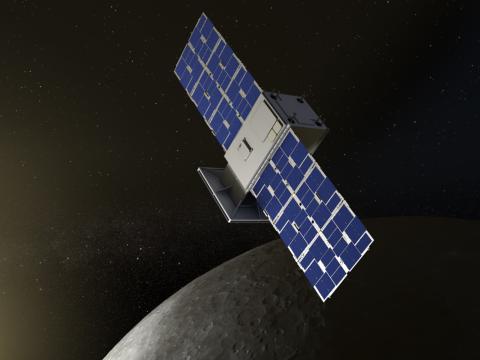
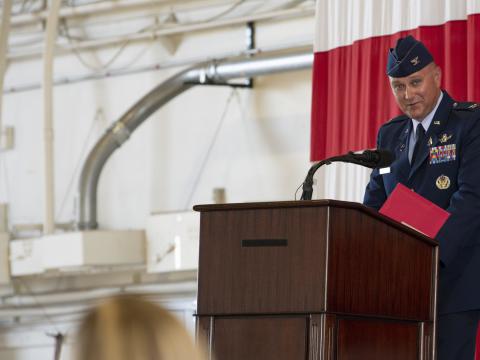

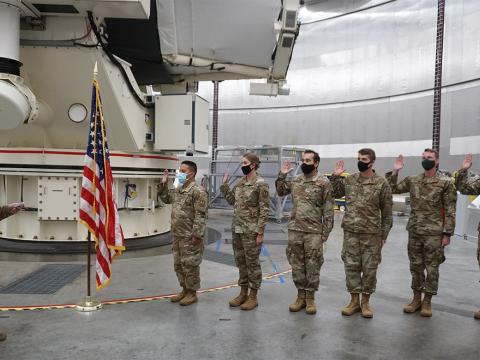
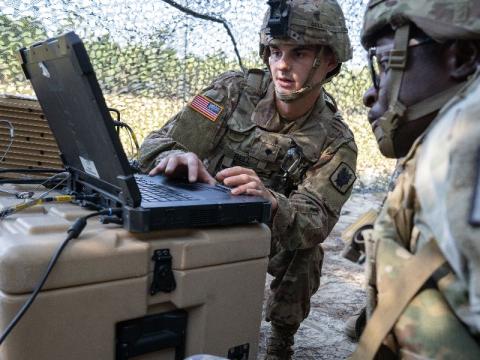
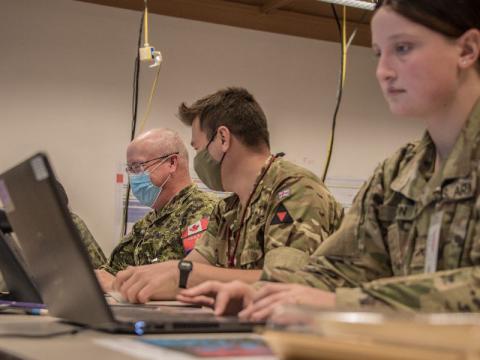
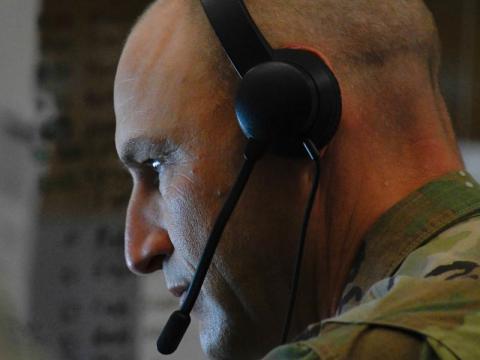
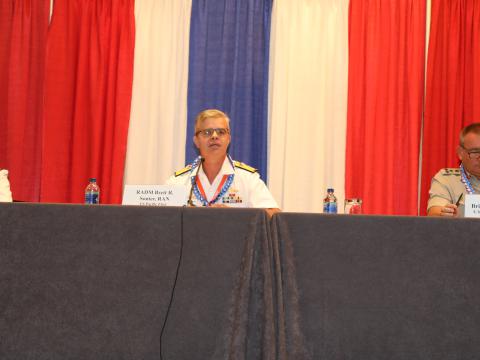

Comment
" Now, network centricity
Comments